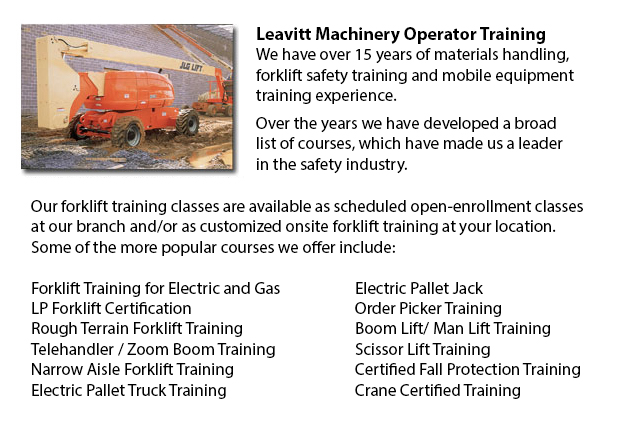
Aerial Lift Safety Training Regina - There are approximately 26 to 30 construction fatalities in North America due to the use of aerial lifts. Nearly all of the individuals killed are craftsmen like for example electrical workers, laborers, painters, carpenters or ironworkers. The majority of the deaths are caused by electrocutions, falls and tip-overs. The greatest hazard is from boom-supported lifts, like bucket trucks and cherry pickers. Most deaths are connected to this type of lift, with the rest involving scissor lifts. Other risks comprise being struck by falling objects, being thrown out of a bucket, and being caught between the guardrail or lift bucket and a thing, like a steel beam or joist.
In order to operate an aerial lift safely, perform an inspection on the following things before utilizing the device: emergency and operating controls, safety devices (like for example, guardrails and outriggers), personal fall protection gear, and wheels and tires. Look for possible leaks in the air, hydraulic fluid and fuel-system. Inspect the device for loose or missing parts.
The places where worker would use the aerial device should be checked carefully for potential dangers, like for instance bumps, holes, drop-offs and debris. Overhead powerlines need to be monitored and avoided. It is recommended that aerial lift devices be used on level, stable surfaces. Never work on steep slopes which go beyond slope limitations specified by the manufacturer. Even on a slope which is level, wheel chocks, outriggers and brakes must be set.
Companies must provide their aerial lift operators with the right manuals. Mechanics and operators should be trained by a qualified person experienced with the applicable kind of aerial lift.
Aerial Lift Safety Guidelines:
o Close doors or lift platform chains prior to operating.
o Leaning over and climbing on guardrails is prohibited. Stand on the platform or floor of the bucket.
o Utilize the provided manufacturer's load-capacity restrictions.
o When working near traffic, utilize appropriate work-zone warnings, like for instance signs and cones.
Electrocutions are avoidable if safety procedures are followed. Stay as far away from power lines - at least 10 feet. Trained electrical workers should de-energize and/or insulate power lines. Those working must make use of personal protective tools and equipment, such as a bucket that is insulated. Nevertheless, a bucket that is insulated does not protect from electrocution if, for example, the worker touches a different wire providing a path to the ground.
Falls are preventable if the individual working remains secure within guardrails or within the bucket by making use of a positioning device or a full-body harness. If there is an anchorage within the bucket, a positioning belt along with a short lanyard is adequate.
By following the manufacturer's directions, tip-overs could be avoided. Never drive the lift platform when it is elevated, unless otherwise specified by the manufacturer. Follow the device's vertical and horizontal reach limits, and never go beyond the specified load-capacity.
-
Forklift Training Classes Regina
Forklift Training Classes Regina - Forklifts are a kind of heavy lifting equipment used in order to move and handle material efficiently and safely. Sometimes called Lift Trucks, they are made use of in different industries. Employees working with an... More -
Crane Certification Regina
Crane Certification Regina - The Crane Certification Program covers the industry suggested content which would teach the safe and efficient operation of cranes. The person will train in the following: pre-operational, operational and post operating r... More -
Telehandler Training Courses Regina
Telehandler Training Courses Regina - Employers are responsible for making sure that their operating personnel and supervisors are trained to work proficiently utilizing telehandler machines. The competence level of employees need to be assessed. If... More -
Operator Safety Training, Re-Qualification Training, In-House Instructor Training in Regina
Lift trucks are utilized in just about all industrial construction sites and in warehouse operations and in boat yards. The reach feature of a lift truck is a very important component utilized in a variety of applications like for instance when a she... More -
Heavy Equipment Operator Training Regina
Heavy Equipment Operator Training Regina - Training facilities that offer good standards in the business and not only provide field performing tasks but additional equipment training are highly sought after. Accredited schools offer students the know... More -
Wheel Loader Operator Training Regina
Wheel Loader Operator Training Regina - Cranes are industrial machines which make use of pulleys or levers so as to lift considerable loads. The Roman people utilized cranes in order to put up big monuments, that means these machines have been existi... More -
Crane Safety Training Regina
Crane Safety Training Regina - Both crane driver as well as their supervisors need to know all the possible problems connected to the operation of an overhead crane. All over North America, there is legislation that provides regulation for the safe o... More -
Scissor Lift Safety Training Regina
Scissor Lift Safety Training Regina - A Scissor Lift is a functional kind of platform that normally moves in a vertical direction. The machinery is capable of this movement due to the use of folding supports that are linked in a criss-cross pattern c... More

Forklift Training Regina
TOLL FREE: 1-888-254-6157
Regina, Saskatchewan
forklifttrainingregina.com
Email Us
About Us



